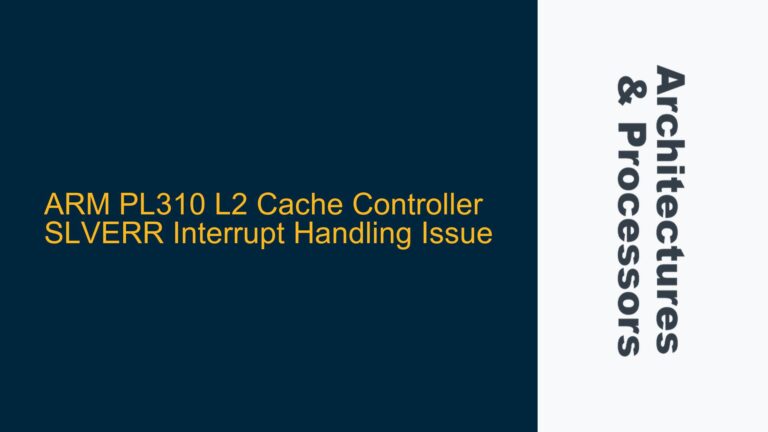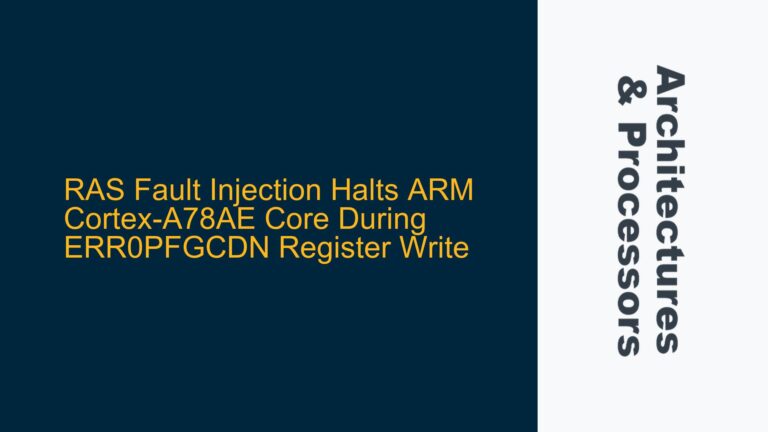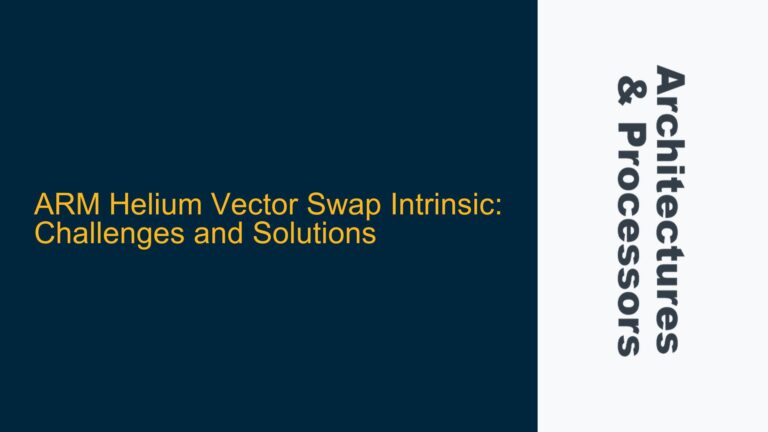ARM Cortex-M0+ Stack Pointer Switching Requirements for Scheduler and Task Execution
In embedded systems utilizing the ARM Cortex-M0+ processor, such as the NXP S32K118, managing stack pointers during task scheduling is a critical aspect of system design. The primary goal is to ensure that the scheduler function operates using the Main Stack Pointer (MSP) while the scheduled tasks utilize the Process Stack Pointer (PSP). This separation is essential for maintaining system stability, especially in time-scheduled environments where tasks are invoked at regular intervals. The challenge lies in correctly switching between the MSP and PSP during context transitions, ensuring that the stacks remain consistent and that no data is lost or corrupted during the switch.
The Cortex-M0+ architecture provides two stack pointers: the MSP and the PSP. The MSP is typically used for exception handling and privileged operations, while the PSP is used for thread mode operations, such as task execution. The CONTROL register determines which stack pointer is active. When the CONTROL register’s bit 1 (nPRIV) is set to 0, the MSP is used in thread mode. When bit 1 is set to 1, the PSP is used in thread mode. However, simply toggling the CONTROL register is insufficient for a robust context switch. Additional steps are required to save and restore the processor’s state, including the stack pointers, general-purpose registers, and program counter.
The scheduler function, which is responsible for invoking tasks, must operate on the MSP to ensure that it has access to a stable and isolated stack. This is particularly important because the scheduler may need to handle exceptions or interrupts that require the use of the MSP. On the other hand, the tasks themselves should operate on the PSP to isolate their stack usage from the scheduler and other tasks. This separation prevents stack corruption and ensures that each task has its own dedicated stack space.
To achieve this, the system must implement a context switch mechanism that saves the current state of the processor before switching stacks and restores the state after the switch. This involves saving the contents of the general-purpose registers, the program counter, and the stack pointers to a memory location before switching to the new stack. Once the switch is complete, the saved state must be restored to resume execution from where it left off. This process is typically handled by the PendSV exception, which is designed for context switching in ARM Cortex-M processors.
SysTick and PendSV Integration for Context Switching
The integration of the SysTick timer and the PendSV exception is a common approach to implementing context switching in ARM Cortex-M processors. The SysTick timer generates periodic interrupts that can be used to trigger the scheduler, while the PendSV exception is used to handle the actual context switch. This combination allows for precise timing of task execution and ensures that the context switch is performed in a controlled manner.
The SysTick timer is configured to generate interrupts at regular intervals, corresponding to the desired task scheduling frequency. When the SysTick interrupt occurs, the processor enters handler mode and uses the MSP. The SysTick handler can then trigger the PendSV exception, which is used to perform the context switch. The PendSV exception is designed to have a lower priority than other exceptions, ensuring that it does not preempt higher-priority interrupts. This allows the system to handle time-critical interrupts without being disrupted by the context switch.
Within the PendSV handler, the context switch is performed by saving the current state of the processor, including the general-purpose registers, the program counter, and the stack pointers, to a memory location. The stack pointer is then switched from the MSP to the PSP (or vice versa), and the saved state of the next task is restored. This process ensures that the processor resumes execution from the correct point in the next task, with the appropriate stack pointer.
The CONTROL register is updated during the context switch to reflect the new stack pointer. If the scheduler is transitioning to a task, the CONTROL register is set to use the PSP. If the task is returning to the scheduler, the CONTROL register is set to use the MSP. This ensures that the correct stack pointer is used for each context.
Implementing Data Synchronization Barriers and Stack Management
One of the critical aspects of implementing stack pointer switching and context management in the ARM Cortex-M0+ is ensuring proper data synchronization and stack management. The Cortex-M0+ architecture does not include a Memory Protection Unit (MPU), so it is the responsibility of the software to ensure that stack corruption does not occur. This involves careful management of stack boundaries and the use of data synchronization barriers to prevent race conditions during context switches.
Data synchronization barriers are used to ensure that all memory operations are completed before proceeding with the context switch. This is particularly important when saving and restoring the processor state, as incomplete memory operations could lead to data corruption. The Cortex-M0+ provides the DSB (Data Synchronization Barrier) instruction, which ensures that all memory accesses are completed before the next instruction is executed. This instruction should be used before and after updating the stack pointers to ensure that the stack is in a consistent state.
Stack management involves defining the stack boundaries for each task and ensuring that the stacks do not overlap. The main stack, secondary stack 1, and secondary stack 2 must be allocated in memory with sufficient space to accommodate the maximum stack usage of each task. The stack pointers should be initialized at the start of the program, and the stack usage should be monitored during runtime to detect any potential overflow.
During the context switch, the current stack pointer is saved to a memory location, and the new stack pointer is loaded from another memory location. This ensures that the correct stack is used for each task. The stack pointer values should be stored in a dedicated memory area, such as a task control block (TCB), which contains the context information for each task. The TCB should include the stack pointer, the program counter, and the general-purpose registers for each task.
In addition to stack management, the system must handle exceptions and interrupts correctly. When an exception or interrupt occurs, the processor automatically switches to the MSP if it was using the PSP. The exception handler must save the current context, including the stack pointer, before proceeding with the exception handling. Once the exception is handled, the context must be restored, and the stack pointer must be switched back to the PSP if the task was interrupted.
The use of the PendSV exception for context switching ensures that the context switch is performed in a controlled manner, without disrupting the handling of higher-priority interrupts. The PendSV handler should be designed to minimize its execution time, as it is executed in handler mode and uses the MSP. The handler should save the current context, switch the stack pointer, and restore the next context as quickly as possible to minimize the impact on system performance.
In summary, implementing stack pointer switching and context management in the ARM Cortex-M0+ requires careful consideration of the processor’s architecture and the system’s requirements. The integration of the SysTick timer and the PendSV exception provides a robust mechanism for context switching, while data synchronization barriers and stack management ensure that the system remains stable and reliable. By following these guidelines, developers can create efficient and reliable embedded systems that leverage the full capabilities of the ARM Cortex-M0+ processor.






